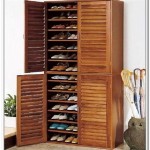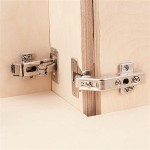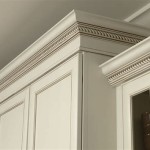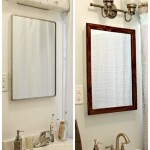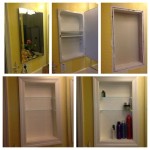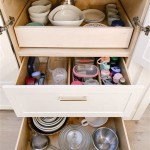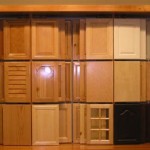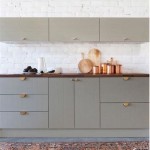DIY Cabinet Locks for Babyproofing Your Home
Ensuring a safe environment for infants and toddlers requires proactive measures, especially concerning hazardous materials and potential dangers within the home. Cabinets and drawers, often containing cleaning supplies, medications, sharp objects, and other risks, are prime targets for curious children. While commercially available babyproofing products offer convenience, DIY cabinet locks present a cost-effective and adaptable solution. This article explores various methods for creating DIY cabinet locks, emphasizing practicality, effectiveness, and ease of implementation.
The primary objective of cabinet locks is to restrict access to potentially harmful contents. Young children possess limited understanding of danger and are drawn to exploring their surroundings. Household chemicals, even in small quantities, can cause severe poisoning. Medications, if ingested, can lead to serious health complications. Sharp utensils and tools pose obvious physical hazards. Therefore, securing cabinets and drawers is crucial for preventing accidents and injuries.
When considering DIY cabinet locks, several factors warrant consideration. The type of cabinet or drawer, the level of security required, and the aesthetic preferences of the homeowner all influence the choice of method. Some DIY solutions are temporary, while others are more permanent. The ease of installation and removal should also be factored in, particularly for rental properties where modifications may be restricted. Cost-effectiveness is a significant advantage of DIY solutions, but compromising safety for affordability is not advisable.
Methods Utilizing Existing Cabinet Hardware
One approach leverages existing cabinet hardware for creating effective locks. This method minimizes the need for purchasing new materials and reduces the visibility of the locks, maintaining the aesthetic appeal of the furniture. One simple technique involves repurposing items commonly found around the house.
Using rubber bands is a temporary, low-cost solution. A strong, thick rubber band can be stretched around the knobs or handles of adjacent cabinets or drawers. The tension of the rubber band prevents the doors or drawers from being opened easily. This method is best suited for lightweight cabinets and drawers that do not contain highly hazardous items. It is also easily defeated by older or more persistent children. Regular inspection of the rubber bands is necessary to ensure they remain intact and effective.
Another option involves using simple loops of cord or twine. These loops are tied around adjacent knobs or handles, creating a similar effect to the rubber bands. The length of the cord should be sufficient to allow for tying a secure knot, but not so long that it creates a tripping hazard. Different materials, such as paracord or braided twine, offer varying levels of durability and resistance to breaking. This method provides a slightly more robust solution than rubber bands but still lacks the security of purpose-built locks.
For cabinets with handles, a child-resistant clip can be fashioned from a sturdy piece of plastic or metal. The clip is designed to slide over both handles, preventing them from being pulled apart. The clip can be secured with a small screw or bolt. This method requires some basic fabrication skills and tools but provides a more permanent and reliable solution. The materials used should be non-toxic and free of sharp edges to prevent injury.
Creating Locks with Basic Materials
Many effective DIY cabinet locks can be created using readily available materials such as wood, magnets, and adhesives. This approach allows for greater customization and adaptability to different cabinet styles and configurations. The key is to select durable materials and employ robust construction techniques.
A simple wooden latch can be constructed from a small piece of wood, a hinge, and a screw. The wooden latch is attached to the inside of the cabinet frame, and the hinge allows it to swing across the opening. A screw or bolt is then used to secure the latch, preventing the door from being opened. This method requires basic woodworking skills and tools, but it provides a relatively secure and durable lock. The wood should be sanded smooth to prevent splinters, and the screw should be securely fastened to prevent it from being pulled out.
Magnetic locks offer a discreet and effective solution. A strong magnet is attached to the inside of the cabinet door, and a metal strike plate is attached to the inside of the cabinet frame. When the door is closed, the magnet attracts the strike plate, holding the door securely in place. To open the cabinet, a separate magnet is used to temporarily weaken the attraction between the magnet and the strike plate. This method requires the purchase of strong magnets and strike plates, but it provides a virtually invisible lock. The magnets should be securely attached using strong adhesive or screws, and the strike plate should be properly aligned to ensure a secure connection.
Another option involves using Velcro straps to secure cabinet doors. One side of the Velcro strap is attached to the inside of the cabinet door, and the other side is attached to the inside of the cabinet frame. When the door is closed, the Velcro straps are pressed together, creating a secure bond. To open the cabinet, the Velcro straps are pulled apart. This method is relatively easy to install and remove, making it suitable for temporary use or rental properties. However, the strength of the Velcro bond may degrade over time, requiring periodic replacement of the straps.
Enhancing Security and Aesthetics
While functionality is paramount, the aesthetic appeal of DIY cabinet locks should not be overlooked. Concealing the locks or integrating them seamlessly into the existing decor can minimize their visual impact. Furthermore, incorporating additional security measures can enhance the effectiveness of the locks.
One strategy involves painting or staining the DIY cabinet locks to match the color of the cabinets. This helps to camouflage the locks and make them less noticeable. Using the same type of hardware as the original cabinet fixtures can also help to maintain a consistent aesthetic. For example, if the cabinets have brass knobs, using brass screws or bolts to secure the DIY locks can create a more harmonious appearance.
Adding a secondary locking mechanism can further enhance the security of the DIY cabinet locks. For example, a small padlock can be used in conjunction with a wooden latch or a magnetic lock. The padlock provides an additional layer of protection against unauthorized access. Similarly, a combination lock can be used to secure a cabinet or drawer, requiring a specific code to be entered before the cabinet can be opened.
Regularly inspecting the DIY cabinet locks is essential for ensuring their continued effectiveness. Check for loose screws, worn-out materials, and any signs of damage. Replace or repair any components that are compromised. As children grow and develop new skills, they may become more adept at defeating the locks. Therefore, it may be necessary to upgrade or modify the locks periodically to maintain their effectiveness. Consider the child's developmental stage and cognitive abilities when selecting and implementing DIY cabinet lock solutions.
In conclusion, DIY cabinet locks offer a viable and customizable solution for babyproofing homes. The methods described range from simple and temporary fixes to more robust and permanent installations. Careful consideration of the materials used, the construction techniques employed, and the specific requirements of the cabinets and drawers are crucial for ensuring the safety and security of young children. By implementing these DIY solutions, parents and caregivers can create a safer environment for their children to explore and grow.

Easy Fix For Baby Latch Diy Stuff Proofing

Inexpensive And Effective Cabinet Lock For Baby Proofing Diy Stuff S

Best Diy Child Proof Drawer Appliance Latch 5 Steps Instructables

Rimiclip A New Kind Of Painless Child Safety Latch Baby Proofing S Toddler

Our Favorite Baby Proofing Tools Reviews By Wirecutter

10 Clever Low Cost Diys To Baby Proof Your Home

Diy Child Safety Locks That Actually Work Instructables

Our Favorite Baby Proofing Tools Reviews By Wirecutter

Lazy Susan Child Lock Apartment Decorating Living Baby Proofing Childproofing

10 Clever Low Cost Diys To Baby Proof Your Home
Related Posts

